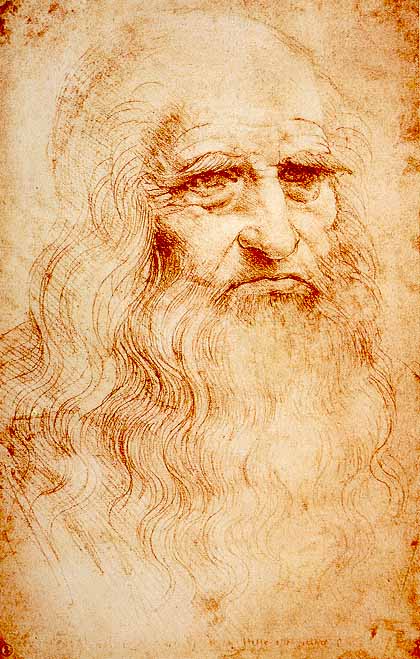
Leonardo da Vinci
Italian
Renaissance

Biography
Leonardo da Vinci was a polymath of the Italian Renaissance, born on April 15, 1452, in Vinci, a small town near Florence. He is widely considered one of the most diversely talented individuals ever to have lived. His interests and expertise spanned multiple fields: painting, sculpture, engineering, anatomy, and architecture, among others.
Educated in Florence, he became a disciple of the renowned painter Andrea del Verrocchio, whose workshop significantly influenced his early style. As an artist, Leonardo is perhaps best known for his pioneering contributions to the technique of sfumato, which allows tones and colors to gradually blend into one another, creating a smoky effect.
His two most famous works, the 'Mona Lisa' and 'The Last Supper', exemplify his innovative use of light, shadow, and perspective. The 'Mona Lisa', painted between 1503 and 1506, features a woman with an enigmatic smile and showcases Leonardo's mastery of portraiture. 'The Last Supper', created in the late 15th century, is a monumental wall painting that depicts the moment Jesus announces one of his disciples will betray him. Beyond painting, Leonardo's studies in anatomy—conducted through dissection—resulted in numerous sketches that advanced the understanding of the human body. His notebooks, filled with scientific diagrams, thoughts on flight, and engineering designs, reveal a mind foreseeing modern inventions long before they came to fruition. da Vinci's impact on art history is unparalleled; he set the benchmark for artistic excellence and inspired generations of artists and thinkers. He passed away on May 2, 1519, in Amboise, France, leaving a legacy that continues to influence art and science today.
Notable Works
Featured Works
Explore the remarkable collection of artworks by Leonardo da Vinci.
No artworks available yet.
